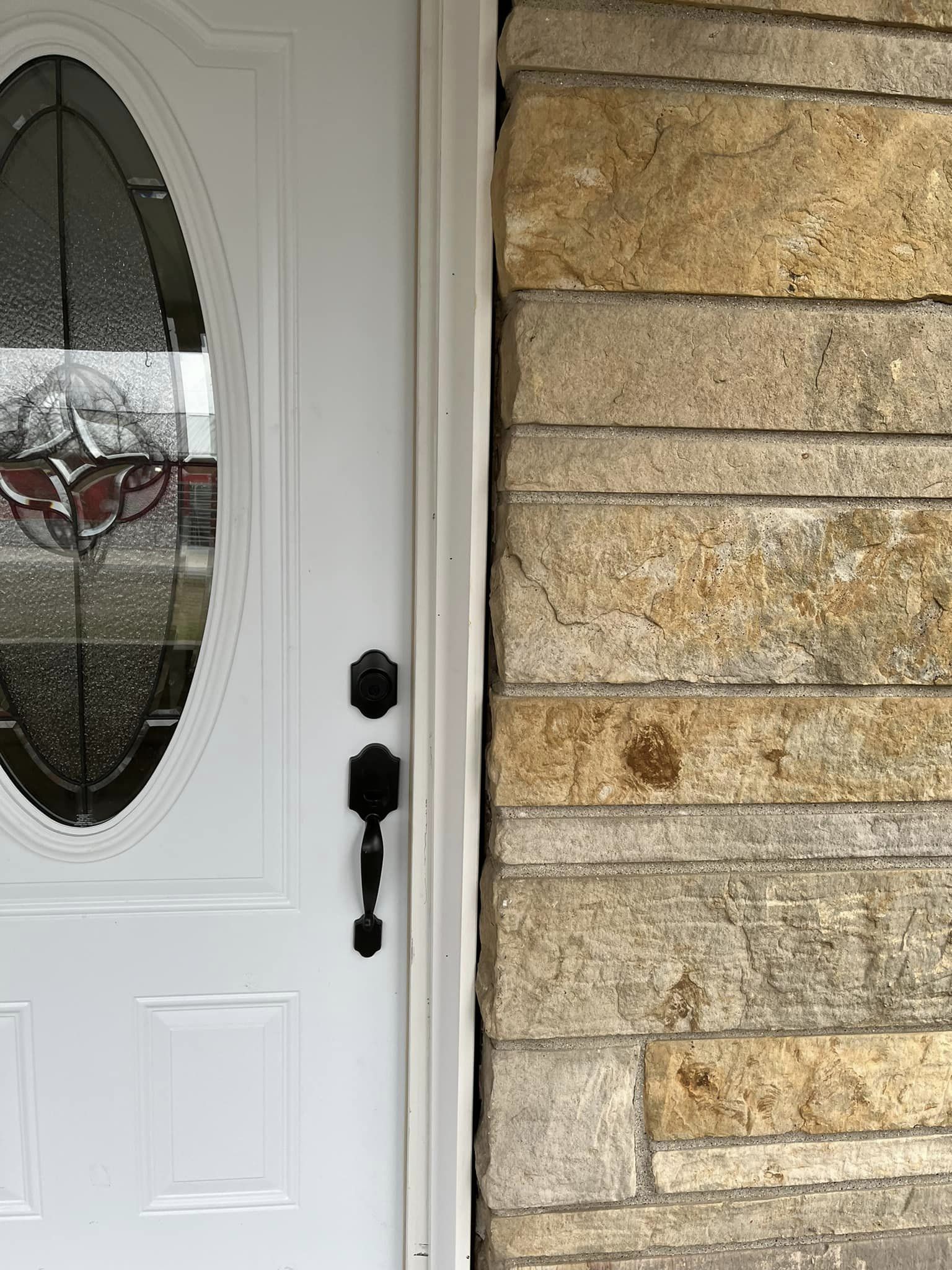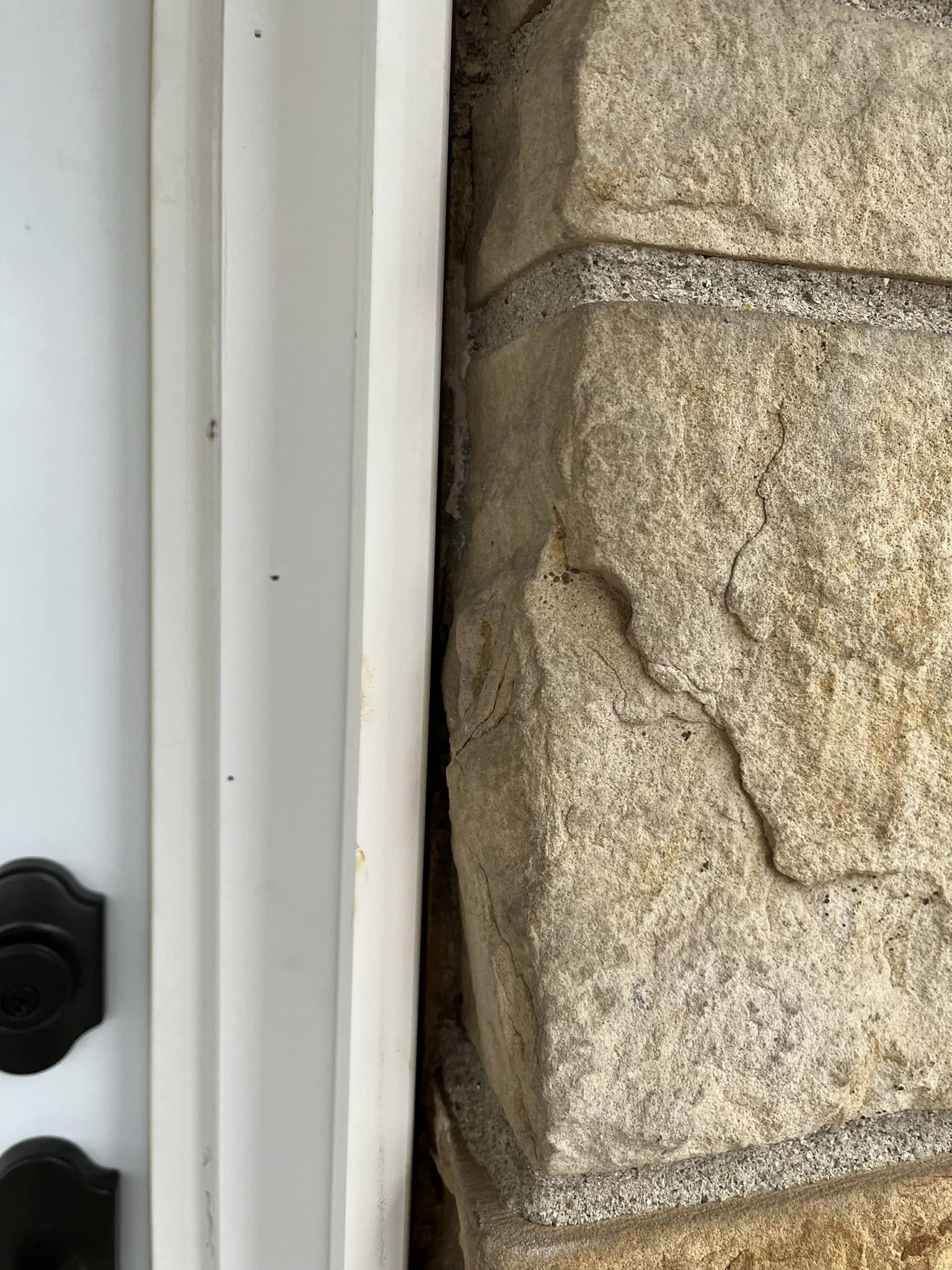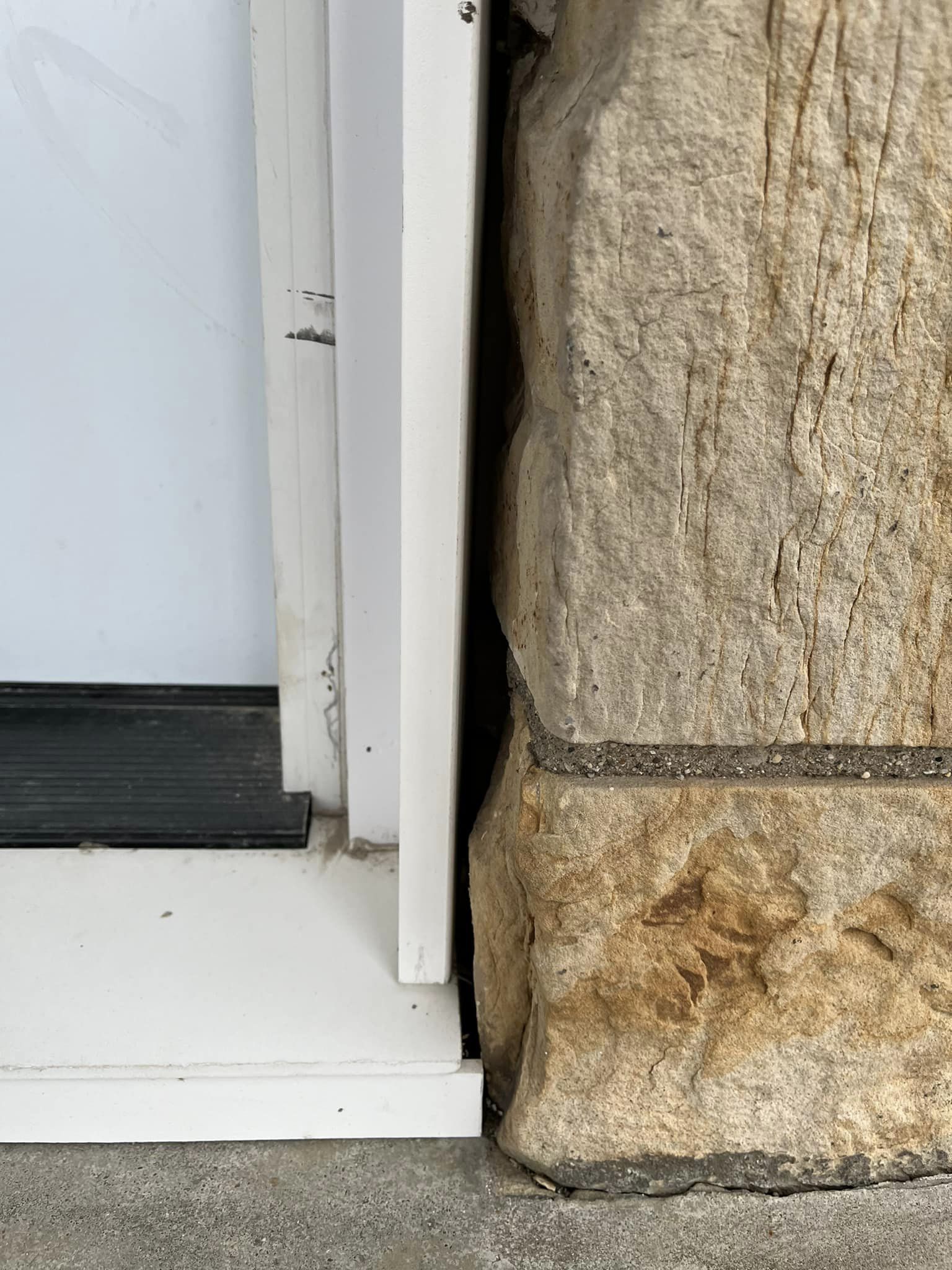How can I seal the gap between my new front door and the stone house to achieve a professional and aesthetically pleasing look?
12 months ago
Last Updated: June 22, 2024
We just installed a new front door on our stone house. I’m not sure how to seal the gap between the stones and the wood. I don’t think caulk will do the trick because the gaps are uneven and it might look messy. I want something that will look clean and professional, not just a quick fix. Got any suggestions?



I think epoxy grout would be the best option.
Starting with backer rod and window caulking.
If you look around, you might come across a clear window caulk that can be easily cleaned with warm water and a sponge. It also dries fast enough to be painted in just one hour. However, keep in mind that the quicker drying ones can harden in the tube if not used all at once. So, maybe opting for the one-hour option is a better choice, unless your iPhone predicts rain later in the day.
You may want to use spray foam along with a scribed piece of trim.
Try using a mortar in a squeeze bag. Smooth it out and clean up before it dries. Fill the gap about a quarter of the way to avoid pushing it through. Matching the color of the existing mortar is key. You can find the bags at any large hardware store in the concrete section. They are inexpensive. Opt for sanded mortar for a sandstone look. Avoid spray foam unless you know what you’re doing, or it will stand out. It seems like there are fine pebbles in the mortar. Add some too. Remember to stuff pink insulation in the gap before filling it. Pack it in tightly with a flat scraper or shim.
They also offer a sturdy mortar-based sealant.
Mortar is prone to cracking. What would you do next?
It’s rare for me to come across such intelligent and experienced responses, but this one definitely stands out.
Perhaps more than anything else, but only if done correctly. My recommendation would be to apply a thinner layer of mastic caulk along the door’s edge and the inevitable small crack that may form over time. Any thoughts on this?
I appreciate the kind words. Construction has definitely presented me with many problem-solving challenges throughout the years.
Hey, , you’re absolutely right. It’s a good idea to start with a smaller caulk joint.
They also offer a type of mortar caulk.
If only there was such a thing as immortal caulk. It would never need replacing. I’m just teasing about the word choice, we all understood what you meant. Sorry, I couldn’t resist thinking about immortal caulk. 😂
Haha I wish I still had my iPhone…
Hahaha, are you really going to blame your smart phone for that? 😆
My iPhone is a mess. It keeps changing the spelling of words after I send messages. I’m always making corrections
I always joke with my wife that I have a smart phone, calling hers an IPhone an ‘idiot Phone.’
Samsung socks.
Sucks* (just keeping that autocorrect for you)
Oh, I’m using a Motorola…
Hey, what’s up with the Blackberry?
Got rid of that when I stopped wearing the uniform in 2006
For mor-flex sanded caulking, consider.
Usually trim is placed around the outside and marked to the stone to ensure caulk seals it properly and there are no gaps larger than a 16th of an inch.
Make sure to secure it tightly against the stone so it doesn’t get affected by changes in temperature or door slams. It’s not very sturdy as it is, and could easily warp. Adding a scribed face board would provide more support.
Trace the shape of the brick onto a piece of trim. It will take some effort and time to carefully cut it out. Just be patient and it will turn out fine. Put foam in between before attaching the trim.
I would cover it with aluminum coil. It may be a bit challenging, but it can be done easily, plus you won’t need to paint it.
Try putting some kind of backing inside (like cutting a pool noodle), then caulk it. You can also cut a piece of trim to fit afterwards.
Instead of caulking, why not fill in with matching mortar for a seamless finish?
Hey, , always remember that it’s important to separate two different materials with a flexible joint to prevent cracking. So, caulking is necessary.
Are you suggesting that any chimney tuck pointing or masonry house repairs will inevitably result in cracks? I have to disagree and stand by this repair method as the most effective way to achieve the desired look.
I agree with Gary. Wood tends to expand and contract while stone remains stable. This difference can lead to cracks, especially since mortar isn’t meant to fill such large gaps. It’s similar to grouting with tile where gaps over 1/2 inch aren’t recommended.
Personally, I have a different opinion. I once had a similar home with brand new windows and doors all around. I used door and window foam to fill the deep gaps and also tuckpointed the surface gaps. I did this for several doors and about a dozen windows. It’s been 10 years and they are all still in great condition with no cracks. I also sealed the joint where the masonry met the door jam with caulk to allow for wood flexing.
Alright
Is tuck pointing really that different? Do you really know what you’re talking about? When switching materials, you absolutely need a flexible product to prevent cracking.
There are definitely several ways to address your problem. As long as you do any of them properly, you’ll end up with a great result. If you decide to use caulk, be sure to tape the trim and side of the stone to help you achieve a consistent depth on the stone side and protect the exposed part of the stone afterward. This will save you a lot of clean-up. Using a good sanded caulk will give you a smooth finish and strengthen the overall project. In my opinion…
Find out the manufacturer of the stone facade and see what they recommend for these intersections. Any stone facade manufacturer should have some recommendations.
Write down instructions for shoe trim
Enjoy ramen with a side of super glue 🤓
A professional could neatly apply caulk
Cement
Even with a professional’s help, it might not turn out well. Seal the door frame first, then install the molding. You might want to consider using a similar cement. It could be challenging to get an exact match if the stone has been in place for a long time.
Grout bag and cement
I think the mortar is the way to go.
Colored sand Caulking
Make sure to use backer rods to fill up most of the gap before applying caulk, .
Mark a piece of brick molding. Then go around the frame with the same.
To be honest, I like how it looks. If this area is not protected by an awning and exposed to the elements, then I would suggest leaving it as is. Are the walls properly sealed behind the stonework?
Area is covered by a porch, but since we’re in Indiana, when a blizzard or heavy spring rains hit, it’s still exposed to the elements. The house, over 100 years old, has stone added in the 60s. Most walls lack insulation, so it’s not well sealed – cold air even comes in through light switches and outlets on chilly days.
I think white exterior caulk would be a good choice. Just apply it carefully, use a damp cloth, and maybe a tooth or stiff paintbrush with warm water to clean up any extra caulk. The white color will blend in with the door jamb.
Write it down. I understand it can be tedious, but that is the most tidy and effective solution
Choose caulking that matches the color of the grout. You can fill larger gaps with backer rod or low-expansion expanding foam.
For a seamless finish, spray low-expansion foam and apply mortar fix as a caulk.
Apply mortar caulk, sprinkle sand over it while wet, and let it set for a day before sweeping away the excess. It will blend in nicely.
Use backer rod and mortar that matches what’s already there
It’s a good idea to add an exterior molding on the edges of your door frame. Just get some “Brick Mold” and adjust it to fit nicely between the brick and the molding
If it’s under a roof, you could extend the jambs out to slightly past the stone, seal the space, and add a beautiful casing trim just above the stone, connected to the jamb extension.
That’s a cool style.
Try sanding the caulk. You can also blend it with grout for a more accurate color match. Another option is using mortar. I have an air conditioner unit installed through a brick wall and they simply sealed around it with mortar during repointing. All I can say is that it was effective.
Why not consider sprinkling sand onto the caulk before it sets completely? This method is less likely to cause cracks.
Remember that throwing sand around will only result in a big mess that is very difficult to clean up. Those who have tried it before can attest that it’s never a good idea.
Foam backer rod and grout/mortar
If you tape the brick first, you can then use caulk
What about grout made of epoxy?
Caulk for concrete
Have someone outline the trim to match the shape of the rock… then seal it with the same masonry used between the stones
Add foam before framing it.